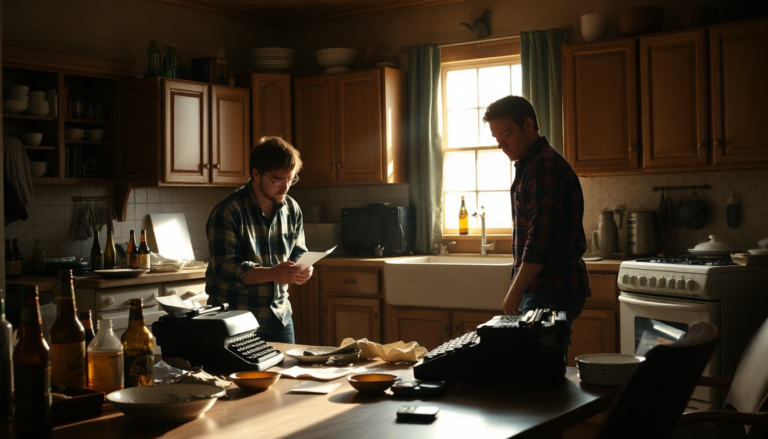Argomenti trattati
Exploring the Tension Between Brothers in ‘True West’
Sibling relationships are often a mix of love and rivalry, a theme that resonates deeply with audiences. This dynamic is expertly captured in Sam Shepard’s play, ‘True West’, which recently graced the stage at Albion College. The performance offers a humorous yet poignant exploration of the tumultuous bond between two brothers, Lee and Austin, played by Seph Cartier and Brady Zalac, respectively. As the curtain rises, the audience is drawn into a world where sibling rivalry reaches new heights, encapsulating the essence of family dynamics.
The Characters: A Study in Contrasts
At the heart of ‘True West’ lies the contrasting personalities of the two brothers. Austin, the educated and seemingly stable sibling, has been left in charge of his mother’s house while she is away. His character embodies a sense of responsibility, but as the play unfolds, we witness his struggle to maintain a semblance of normalcy amidst the chaos introduced by Lee. Lee, on the other hand, is unpredictable and enigmatic, a character that keeps the audience guessing. As Cartier describes, “At any moment you’re like ‘what’s this guy going to do?’” This unpredictability adds an intriguing layer to the narrative, making their encounters all the more electrifying.
Relatable Sibling Dynamics
The clash between Lee and Austin is not just entertaining; it’s relatable. Many audience members can identify with the frustrations that arise from differing lifestyles and personalities within a family. Zalac notes that Austin’s desire for a good relationship with Lee is complicated by their inherent differences. “He wants to have a good relationship with him. But also, he pisses him off so quickly,” he explains. This struggle is palpable on stage and resonates with anyone who has navigated the complexities of sibling relationships.
Underlying Themes and Conflicts
While the brothers’ feud is the main focus, the narrative also weaves in the theme of creative ambition, particularly through the subplot involving a Hollywood producer named Saul. Played by Alexander Christian, Saul is initially interested in Austin’s script, which adds another layer of tension when Lee starts to lure him in with his own impromptu storytelling. While this subplot aims to elevate the stakes, it can feel somewhat disjointed from the core rivalry between the brothers. The conflict over screenplays and movie scripts, while relevant, may not resonate as strongly compared to the raw emotional tension between Lee and Austin.
Production Design and Performance
The set design of ‘True West’ deserves special mention. It is intricately detailed, evoking a sense of nostalgia that transports the audience back to relatable domestic spaces. From the magnets on the fridge to the trimmings on the wallpaper, the set design enhances the storytelling experience, making the brothers’ home feel lived-in and real. The performances by Cartier and Zalac are equally commendable, showcasing a range of emotions that highlight both the comedic and serious undertones of their relationship.
Final Thoughts on ‘True West’
Overall, Albion College’s production of ‘True West’ captivates with its exploration of sibling rivalry, showcasing the complexities of familial love and conflict. While the subplot involving Hollywood ambitions may not fully engage every viewer, the core relationship between Lee and Austin certainly does. The play offers humor, relatability, and a deep dive into the emotional landscape of brotherhood. For those interested in a compelling theatrical experience, this production is not to be missed. Upcoming showtimes include performances tomorrow at 7:30 p.m., Friday at 7:30 p.m., and Saturday at both 2 p.m. and 7 p.m.

